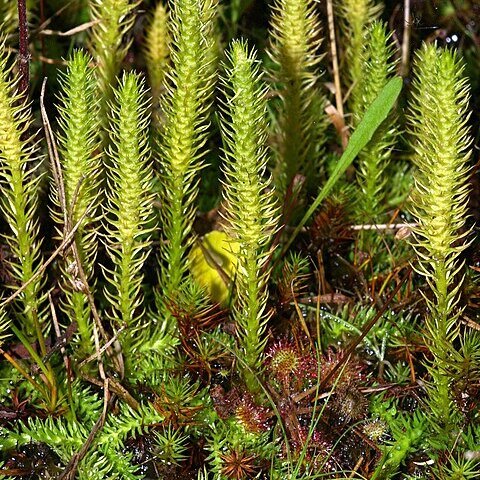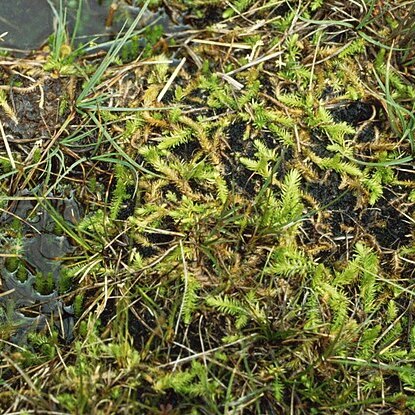Plants creeping on wet ground. Roots emerging immediately on underside of stems. Horizontal stems on substrate surface, supine or arching. Upright shoots forming very leafy peduncles scattered along horizontal stems, 2--9 mm diam., unbranched. Gemmiferous branchlets and gemmae absent. Strobili solitary, fully differentiated from peduncle or peduncle not differentiated, tip blunt to ± acute; peduncle leafy, leaves not in distinct ranks, not imbricate, usually monomorphic, linear-lanceolate, margins commonly with a few teeth; sporophylls generally longer than peduncle leaves. Sporangia nearly globose. Spores rugulate, sides at equator convex, angles acute. Gametophytes photosynthetic, on substrate surface, pincushion-shaped; ring meristem absent. x = 78.
Plants helophytic, small. Aerial shoots creeping, unbranched or dichotomously branched, terete, sparsely leafy. Leaves spirally arranged, dimorphic or monomorphic, lanceolate, linear, or scalelike, papery, midrib indistinct, base cuneate, decurrent, sessile, margin entire, apex acuminate. Strobili solitary, erect, terete, stalked. Sporophylls different from trophophylls, dimorphic or monomorphic, subulate to lanceolate, imbricate, margin membranous and irregularly toothed, apex acute, acuminate, or obtuse. Sporangia yellow, reniform.
Sporophytes with trailing to arching or looping indeterminate shoots which root at usually long intervals and occasionally branch in the horizontal plane; usually 1 erect branch arises on the dorsal side of each loop, with a series of subdecussately arranged spreading branchlet systems. Strobili nodding or pendulous, sessile, terminating ultimate branchlets. Sporangia subglobular, anisovalvate, almost enclosed in cavities formed by the strobilar axis and the coalescent, basal membranes of the sporophylls.
Sporophytes with dichotomously and laterally branched subterranean main stems and creeping to erect aerial stems. Strobili sessile on short erect lateral branches overtopped by adjacent vegetative branches; in prostrate branch forms, strobili standing erect above branches. Sporangia subglobular, anisovalvate, almost enclosed in cavities formed by the strobilar axis and the coalescent basal membranes of adjacent sporophylls.
Sporophytes with prostrate indeterminate isophyllous to strongly anisophyllous horizontally-branching shoots and dorsally-arising erect simple strobiliferous branches. Leaves of strobiliferous branches similar to those of prostrate shoots, or strongly reduced and widely separated. Sporophylls in alternating whorls of 3-5, rarely decussate, forming 4-10 longitudinal ranks, not enclosing sporangia. Sporangia isovalvate.


